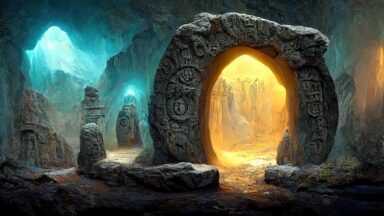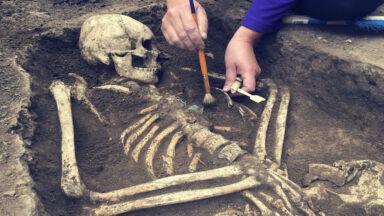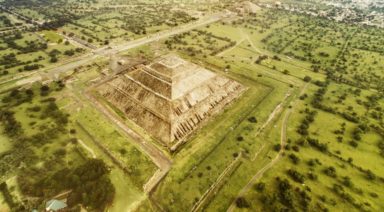Ancient Complex at Karahan Tepe Older than Gobekli Tepe

New discoveries have been made at the ancient site of Karahan Tepe — this sister site of Göbekli Tepe may have just revealed its hidden origins and proved an ancient civilization is even older than once thought.
Archeologists working at the ancient site of Karahan Tepe, about 30 miles east of its sister site Göbekli Tepe, have found stunning carved heads, standing stones, buttresses, and what appear to be snakes prominently carved into the earth. The dig is being led by the University of Instanbul and in their official report point out that, not only are these and other neolithic structures the beginning of architecture but also held a symbolic purpose. Writing, “[T]hey also bear traces of the conceptual transformation of the space. It is during this period when the building was instilled to mean something other than a space to live in, whereby the construction of the first shelters was followed by that of ‘special structures.'”
Science and history writer Andrew Collins, has visited and studied Karahan Tepe since 2004 and has seen these special structures up close.
“The main structures were all what they call ‘subterranean,’ they would cut deep down into the bedrock. One was a huge elliptical stone enclosure,” Collins said. “Clearly, this was an amphitheater for ceremonial ritual activity. Yet this connected via a hole that is 70 cm in diameter into a very strange room containing 11 stone pillars, ten of which are actually carved out of the bedrock itself, and sticking out of the wall of this room that I call the Pillar Shrine, is this elongated neck with a head on the end of it — this carved stone head. This confined room is somewhere initiates or people looking for connection or communication with some kind of otherworldly force or influence or diety would come to do their attunement in altered states of consciousness.”
What can we learn from the detailed subterranean carvings and the positioning of the structures?
“From what we can see at Karahan Tepe and the method of construction and design is we’re dealing with a mentality, a mindset, that is already very sophisticated in its ideas of what it wants to achieve. We have found that there are astronomical alignments associated with these new discoveries at Karahan Tepe. For instance, the large elliptical enclosure is connected with the so-called Pillar Shrine, and the actual alignment between those two takes you to another hill locally called Keçili Tepe, this alignment will take you directly to where the bright star Deneb, in the constellation of Cygnus, also known as the Northern Cross, would set down. And with the same position as Cygnus is the Milky Way that would be seen rising up into the sky at that moment,” Collins said.
“These alignments tell us that this focus toward the Milky Way, the place of souls, the place of the dead, the place of the afterlife is suggesting that they were perhaps drawing across from that other hill to Karahan, some kind of energy associated with the ancestors. It suggests that we are dealing with a culture that knew what they wanted to do, they knew what they wanted to achieve by creating a complex like this.”
Göbekli Tepe, discovered in 1994, was considered by many mainstream archeologists to be a one-off that should not have existed but did only as an anomaly. Andrew Collins and others have argued for years, this was part of an older, lost civilization.
“The biggest takeaway that we can take from Karahan Tepe and the excavations going on there now is that Göbekli Tepe was not simply an anomaly. Karahan Tepe shows us that we are dealing with a high culture that existed as early as 11,500 years ago,” Collins said.
We’ve barely scratched the surface at Karahan Tepe, but what can we infer from what we have learned so far?
“We’re on a learning curve with Karahan Tepe now. What’s very clear so far is that they were working toward some premeditated design. I strongly believe that’s got something to do with understanding what we would call the ‘cosmic source,’ the force that manipulates nature, that creates life. And it’s something that shamans, initiates, aspirants would achieve during altered states of consciousness, during what we’d call death trances. And I think that they recognized something when in these states that they needed to know more about. We know that the serpent is the symbol of cosmic knowledge, of cosmic wisdom, and that is, to me, the best evidence so far that we have so far to suggest that this is correct, that the builders of Karahan Tepe were looking for the ultimate cosmic knowledge,” Collins said.
More discoveries are being made at Karahan Tepe almost every day.
This Hindu Prophecy is Eerily Similar to Nostradamus' Predictions

The Kalki Avatar Prophecy states that Vishnu will appear in his 10th form to end the Kali Yuga, Nostradamus predicted a similar event.
According to the Hindu Yugas, we are currently living in the Kali Yuga – the Iron Age, Dark Age, or the lowest point in spiritual consciousness and moral virtue. Despite technological advancement, our current age has been marked by war, inequality, and scarcity. And though this may be a subjective observation, there are certainly some aspects that carry some validity.
While the start and end dates of the Kali Yuga are disputed and somewhat ambiguous, many believe we are nearing the end, when Kalki, the final avatar of Vishnu, is supposed to make his messianic return to Earth. This return will usher in the Satya Yuga, our upward journey back to the pinnacle of truth and cosmic order, known as dharma. Many believe we are on the precipice of experiencing the return of this enlightened being and there is even evidence that Nostradamus’s predictions corroborate this Hindu prophecy.




































